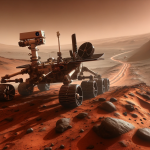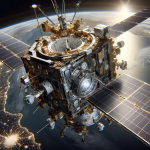Odense, Denmark, witnessed a significant event as senior executives from NVIDIA, Siemens, and Teradyne Robotics gathered to inaugurate Teradyne Robotics’ new headquarters. Known for its flourishing robotics industry, Odense now houses a hub aimed at fostering innovation and collaboration among prominent robotics companies. This move underscores the city’s vital role in the global robotics landscape, showcasing cutting-edge AI robotic applications and engaging in discussions about the future of advanced robotics.
Odense, one of Denmark’s oldest cities, has a well-established reputation in the robotics sector, housing over 160 robotics companies with a workforce of 3,700. These companies have significantly contributed to the progression of the robotics industry. Comparatively, previous reports have highlighted Odense’s collaborative culture and its ability to withstand economic challenges through innovation. The city’s strategic focus on robotics continues to attract global attention, reinforcing its status as a key player in the sector.
The collaborative approach in Odense is crucial for the industry. Historically, the city has been a nexus for partnerships and technological advancements. This aligns with the recent statements made by industry leaders at the event, emphasizing the importance of collaboration for achieving breakthroughs in robotics and AI. The establishment of Teradyne’s new headquarters in such an innovative city is a testament to Odense’s ongoing influence and leadership in the global robotics arena.
Panelists Highlight Collaborative Efforts
During the event, executives from Teradyne Robotics, Siemens, and NVIDIA discussed the pivotal role of partnerships in driving innovation. They emphasized that collaboration is essential for both startups and established enterprises to thrive in the rapidly growing global robotics market. The strategic alliance between NVIDIA and Teradyne Robotics, featuring AI-based intralogistics systems and the integration of advanced computing, exemplifies the effectiveness of collaborative efforts within the industry.
AI Driving Robotics Innovation
Artificial Intelligence (AI) is a crucial factor in the advancement of robotics, providing machines with the ability to understand, learn, and make decisions. NVIDIA’s collaboration with Universal Robots and the development of the Isaac platform are key examples of how AI is enhancing autonomy in robotics. Siemens’ focus on industrializing AI for automated deployment and monitoring further highlights the industry’s move towards more integrated and accessible AI solutions.
Valuable Insights for Industry Leaders
- Collaboration is key to rapid innovation in robotics.
- AI integration enhances robot autonomy and decision-making.
- Strategic partnerships drive advancement in robotics and AI.
Executives concluded that autonomous machines are already making a significant impact across various industries. Robotics enhances manufacturing efficiency and addresses challenges like sustainability and workforce shortages. Companies aim to localize production, balancing cost efficiency with the need for advanced automation due to shrinking workforces. Collaborative robots (cobots) and AI-driven solutions are pivotal in addressing these challenges, offering flexible and adaptive manufacturing solutions.
AI and robotics technology continue to evolve, transforming robots from simple tools to intelligent, autonomous partners. The integration of AI in robotics, as discussed by NVIDIA, Teradyne Robotics, and Siemens, is driving the industry towards a future where robots can operate independently and adapt to various industrial needs. This progress signifies a major leap forward in how robots are utilized in real-world applications, enhancing productivity and operational efficiency across sectors.










